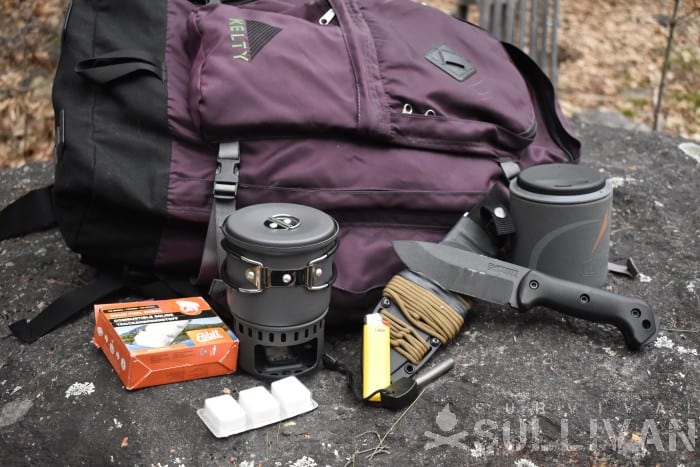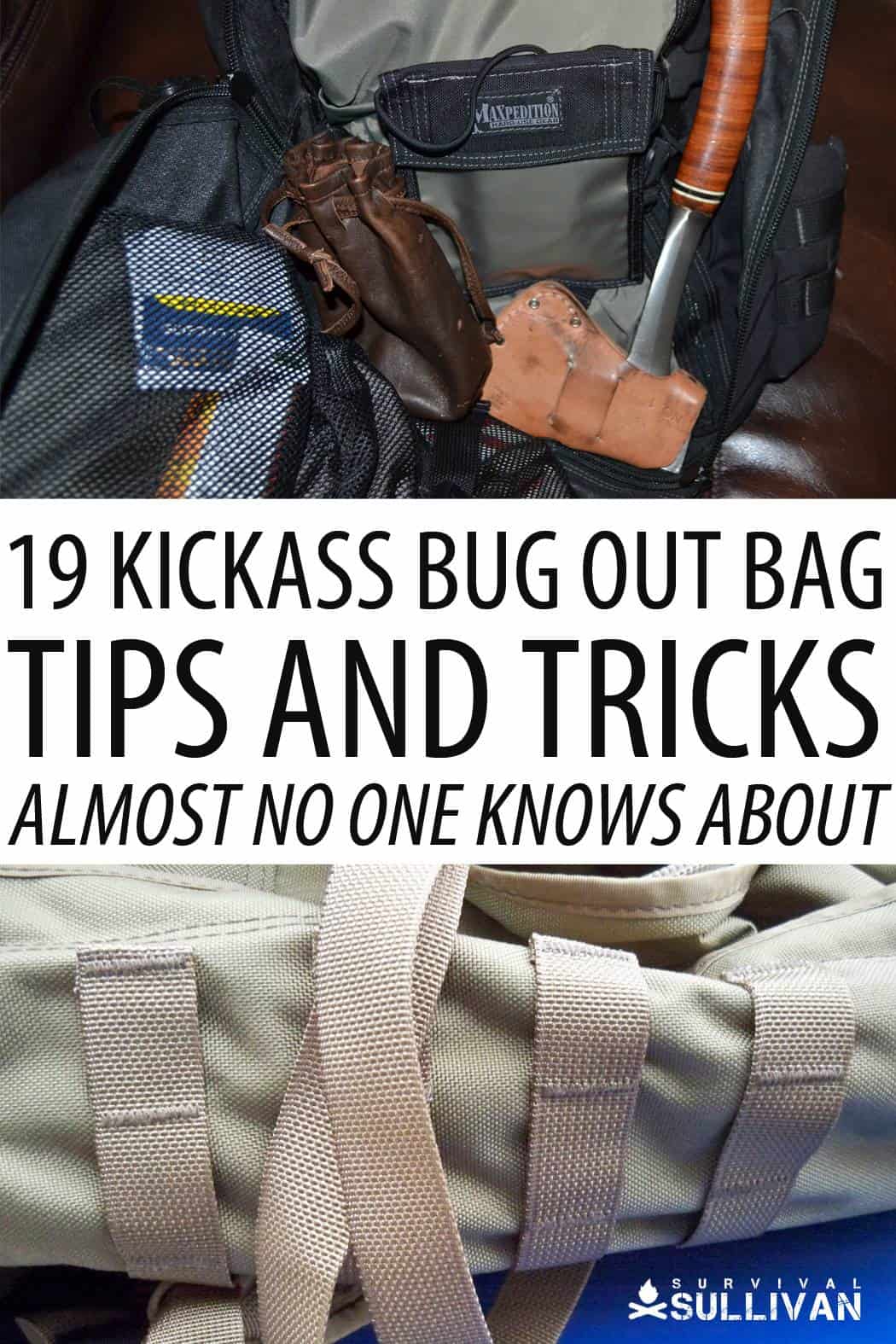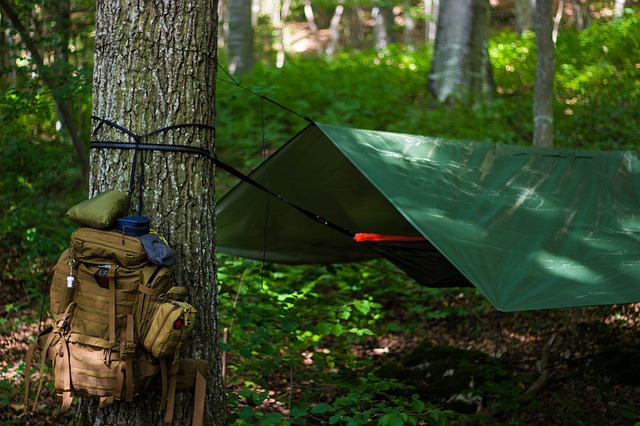Preppers, hikers, campers and other folks of an outdoor persuasion are constantly fussing over their backpacks. There is no chore too boring, no job too big, and no task too great for folks who rely on their packs to get them through the day, and they will stop at nothing for any improvement, for any enhancement or any advantage.
This is all entirely reasonable, as the backpack is essential for any outdoor activity more demanding than a pleasurable stroll across the prairie.

Accordingly, everybody has heard the same, old, tired advice by now on reducing weight, packing properly and choosing the right bag in the first place. It is time to step your game up a little bit, and get even more from the pack and load you already have!To do that, we have brought you a collection of clever bug-out bag tips and tricks that most folks don’t know about.
Altogether, you are bound to find several bite-sized bits of wisdom that will improve your experience, enhance your pack and generally make your life easier and your efforts more productive. No time to delay; let us get to the list!
Weigh Your Pack
It is funny to me how many people wring their hands and worry over how much their pack weighs, but they never get an exact figure.
Tracking pertinent data is important for measuring performance, and if you don’t know what values to plug in, how can you reach meaningful determinations?
You should make it a point to weigh your bug-out bag, both when it is loaded and unloaded, so you know exactly how much weight you are dealing with. Only then can you start making decisions concerning the loadout in an intelligent way.
Add Hydration Bladder
Water bottles are all the rage today, and with good reason, since we have so many good ones to choose from. In fact, many folks have shied away from using a hydration bladder, since they increase weight and bulk, and can turn into calamity should they leak all over your supplies.
But for preppers, the ability to save time and be efficient is extremely important, and a hydration bladder will allow you to drink on the move without missing a single step.
Modern iterations of this classic piece of kit are extraordinarily strong and resistant to damage, so don’t worry about spills.

Add Quick-Access to Belt and Straps
It never fails when you’re out on the trail you’ll have a selection of items, provisions and other small odds and ends that you will use more or less constantly, things you want to keep close at hand.
Most people put this assortment of gear in their pockets, which is fine, until your waist belt is clamped down tight on your heavy pack and you have to finagle your way past it to get your things!
This can be avoided by adding small pouches on your waist belt and shoulder straps to keep these items close and easier to access.
Add Power Routing
Face it; the times, they are a changing. And for us that means more and more preppers are going to field with a full complement of useful electronics.
The addition of these electronics means you’ll need power management and generation technology, and you can make your life easier by integrating your power bank with your bug-out bag and routing the necessary connections to the exterior where you can connect them with a minimum of fuss, and without dumping the contents of your bag.
Repackage Bulky Items
Bulky items that you carry with you should be mercilessly repackaged to save even more space and wait. Prime offenders are dehydrated meal packages, MREs, water purification chemicals, and things like medicines and pill bottles.
Boxes should be shucked if the contents are individually packed, and the same goes for large pouches of stable goods.
See more organizational tips for your BOB here.
Use a “Load Journal”
If you are anything like most preppers, it has probably taken you many iterations of packing, testing, and experimentation to settle on the loadout that works best for, you while covering all of your bases.
You have probably even been happy with it for a while. I will still bet my bottom dollar right now there is more you can cut out.
Every time you go field with your pack, keep a simple load journal of the things you used in your loadout, and when you use them. Over time, you’ll notice there are still some things you never use or barely use it all, things you could cut out to save even more weight.
Fix it with Floss
If your pack does start to fail or you get a nasty tear in a panel you can fix it yourself if you have some basic sewing skills, the appropriate hardware and some sturdy, weatherproof thread.
The latter is often in short supply, and most folks don’t even think to pack it, but there is something you do pack that works just as good: Floss.
Dental floss is ultra thin, super-tough and highly weather resistant, making it a great improvised thread for all kinds of repairs in the field.
Hang Sensitive Items in a Sack
If you are carrying any truly sensitive items, be it ripe, fresh berries, wild sourced eggs, glass vials or anything else you can improve its chances of survival compared to rolling around inside your pack with all your other equipment by simply hanging it from the outside of your pack in a sack.
The gentle swaying and rocking motion will not damage even delicate items, and you can easily improvise a pouch for anything by using a bandana.
Camo It
Sometimes it pays to go low profile in a survival situation, and that means you need to camouflage both yourself and your gear, including your pack. This can be tricky if you have a vibrantly colored pack.
The solution is simple, as you can use a purpose-made camouflage cover to quickly dampen down your pack’s appearance, or even something improvised like an old t-shirt or scrap of cloth muddied up with local soil.

Another solution would be to change your backpack’s color entirely, particularly if it has stringent colors, but don’t want to spend a pretty penny getting a new one.
Silence It
Keeping your bug-out bag quiet is important for maintaining situational awareness, reducing auditory clues that might give away your position to hostiles and generally reducing aggravation.
You should pack and repack the contents of your pack until you hunt down and silence every last squeak, rattle, clang and bang.
This is sometimes a major chore, but it could make the difference in a life or death situation, allowing you to hear what is in the environment around you before they hear you.
Minimize Exterior Cargo
It seems to be something of an en vogue look in certain circles to have all sorts of equipment strapped to the outside of your pack with no regard for balance, bulk or any efficiency. How bohemian!
Though some items are too big to insert in even the largest of backpacks, this is rare, and you should make every effort to eliminate exterior cargo from your bug-out bag. This will save energy, keep you balanced and make your pack feel lighter.
Add Solar Panel
All those hungry electronics we mentioned above will need feeding, and once your power bank starts to run out of juice, you’ll need to replenish it. Pity then that there is not an outlet in sight out here in the wilderness!
That’s okay, because you can generate your own power so long as you have access to the plentiful energy of the sun. Capitalize on this energy even while you are moving by attaching your solar collector array to the top of your backpack, or getting a bag that already has one incorporated, such as this one:

Ditch Your Tent Poles
Whether you are using a purpose-made tent, a tarp or some other covering for an improvised shelter you can save a lot of weight and a serious amount of bulk by ditching your tent poles and framing members.
Most environments will furnish plenty of sturdy branches you can use to the same effect or, if you carry a walking stick or trekking poles, you can use those just the same.
Improve Your Belt and Straps
Most bug-out bags start to rub people the wrong way, literally, where the waist belt and main straps contact their body, not the back panel.
You should make every effort to improve the belt and straps, and so long as you find a shop in your area that is skilled you can change out padding, texturing and more. If it isn’t possible or is financially unfeasible you should consider getting a different bug-out bag.
Increase Visibility
Sometimes, you want to be seen when you were on the move. This might help potential rescuers locate you, or just help other party members keep track of each other.
For the purpose you can greatly increase the visibility of a drab pack by using a brightly colored rainfly, a similarly brightly colored t-shirt or piece of cloth or even adding a strip of reflective tape that will glint when it catches the light. Don’t risk getting lost or going unfound!
DIY Waterproofing
Nothing will ruin your day, not to mention your possessions, faster than a water-logged and now far heavier backpack.
Waterproofing is the key to preventing this unhappy outcome, and can be easily achieved through nothing more than a wrap with a heavy duty trash can liner, purpose made rainfly, or a generous DIY coating of beeswax or some other waterproofing agent.
Keep the Weight Close
I’m constantly amazed by how many people fail to keep the heaviest part of the load in their pack against their body. This is achieved through intelligent packing, but also proper fitting of your backpack.
The more the backpack pulls away from you, slumps, or generally increases distance from your body, the heavier and harder to carry it becomes. Pack the weight close to your body, and then keep your pack cinched up tight against you. You’ll save energy, and go faster.
Pack the Same Way Every Time
Figuring out your perfect, final iteration of your bug-out bag contents is only half the battle. The other half of the battle is practicing packing and unpacking, packing and unpacking over and over again until it is second nature, and you can reliably pack it the exact same way each and every time.
This is not some bit of wannabe military discipline: Only by attaining this level of familiarity and intimacy will you reliably be able to find whatever you need in your pack with absolutely no light at all to see by.
Don’t Use Stuff Sacks
Don’t use stuff sacks unless you absolutely have to. Bottom line.
I understand the urge to be organized, and there is something to be said for modularizing the contents of your bag for certain, specific purposes, but slavish adherence to making sure each and everything you have goes into its own smaller sack inside your BOB only increases bulk, and gobbles up cubic inches that could be used for carrying actual gear (by leaving “dead zones” in the areas where you stack the sacks).
You’ll find that you can pack soft items around hard items to achieve greater gains in capacity.
Conclusion
There you go. 19 cutting-edge BOB tips and tricks that you might not have heard before.
No matter who you are, what kind of BOB you carry and what you’re preparing for, there is bound to be at least a handful of tips on this list that you can make use of to further improve your BOB so you’ll be even better off when that fateful day arrives.

This article first appeared here Kickass Bug Out Bag Tips.
